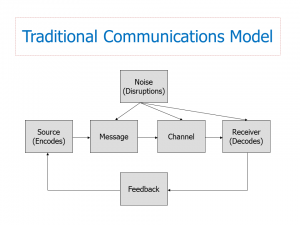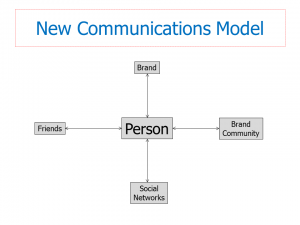Marketing is changing at a pace faster than ever. In one survey of marketers last year, 76% agreed that marketing had changed more in the past two years than the previous 50 years. If you subscribe to this sentiment, then you would likely not be surprised by findings from a recent study about B2B marketing priorities now and in the near future. The Information Technology Services Marketing Association (ITSMA) surveyed B2B marketers to determine their perceptions of leading marketing responsibilities now and what they will be two years from now.
Below is a graphic from eMarketer summarizing the top 5 lists for now and two years out:
A comparison of the top 5 lists for current responsibilities and the priorities in two years suggests B2B marketers anticipate dramatic changes in their roles. The number one priority currently- brand management- does not even make the top 5 list for two years from now. Use of marketing technology tools hits the two-year-out list at number 2. It can be assumed that this increased emphasis on using marketing technology will touch the other four anticipated leading responsibilities. Two observations from the list of anticipated responsibilities are that “understanding buyers” appears at number 1 seemingly out of the blue. But, has that not always been the fundamental job of a marketer? If we do not understand buyers, the destiny of our business is likely assured… and the end is not pretty. The other observation is the constant priority given to thought leadership, landing at number 4 on both lists. It is on this constant that we will examine more closely to understand.
What is Thought Leadership?
In an age in which anyone with Internet access and a keyboard has a voice, establishing a brand (corporate or personal) as a thought leader is crucial for wielding influence, building a community, and ultimately driving business growth. But, what exactly is meant by the term thought leadership? Thought leadership experts Russ Allan Prince and Bruce Rogers offer the following definition of a thought leader:
“A thought leader is an individual or firm that prospects,clients, referral sources, intermediaries and even competitors recognize as one of the foremost authorities in selected areas of specialization, resulting in being the go-to individual or organization for said expertise.”
Consumers evaluate a seller’s credibility along the dimensions of expertise and trustworthiness. Becoming a thought leader is a way to positively impact both of those judgments made by consumers. Blog posts, how-to videos, and case studies are three examples of how marketers use content to “show what they know” (expertise). A content strategy aimed at building thought leadership can also “humanize” a brand through the stories told and employees featured, tactics for building trust with buyers. Oh, and there is one more part to the definition put forth by Prince and Rogers:
“A thought leader is an individual or firm that significantly profits from being recognized as such.”
This element of the definition means that aspiring to a position of thought leadership is not done for the purposes of stroking ego; it is meant to contribute to business growth.
What It Means to be a Thought Leader
It is human nature that people like to do business with individuals and companies that they like and trust. Let’s add one more qualifier- we like to do business with individuals and companies in which we have confidence in their capabilities (related to trustworthiness but speaks more to expertise). Given this characteristic of buyers, it is not surprising that thought leadership is considered a top priority today and in two years… and in five years and in ten years. Being a thought leader is not saying “Look at me- I am great!” It is about demonstrating your capabilities to solve problems and provide help to others. Having the ability is not enough; it must be communicated to the audiences that stand to benefit from your thought leadership.
What are you waiting for? Make your voice heard by becoming a trusted resource for information, advice, opinion, and action.













